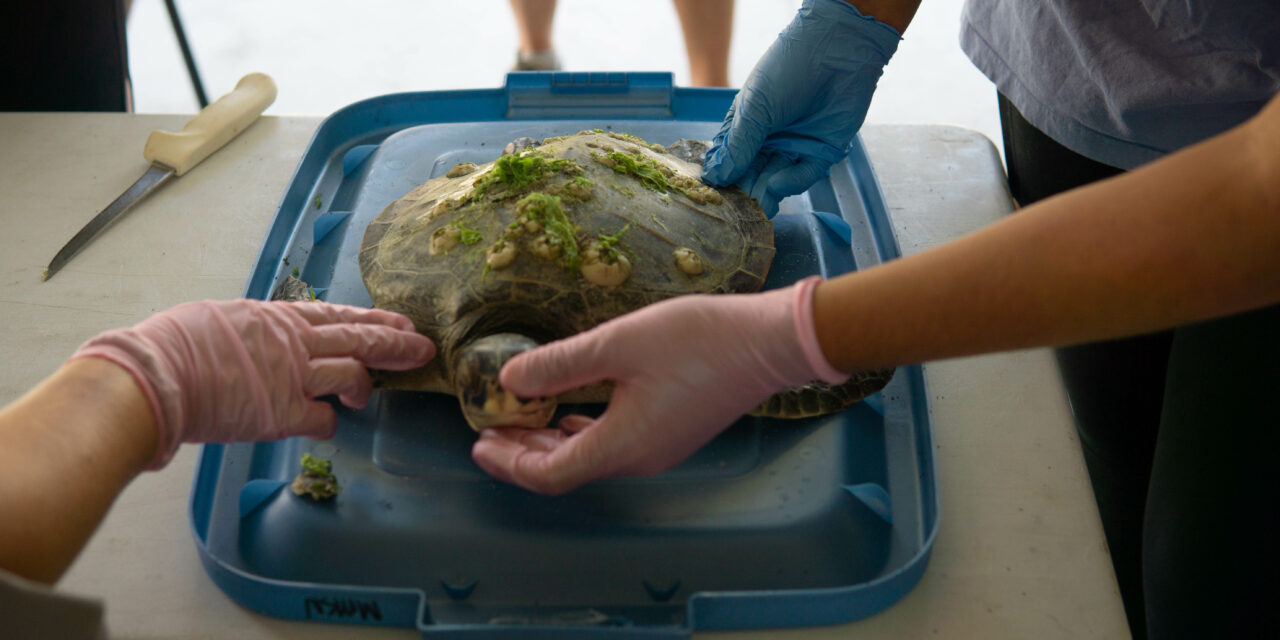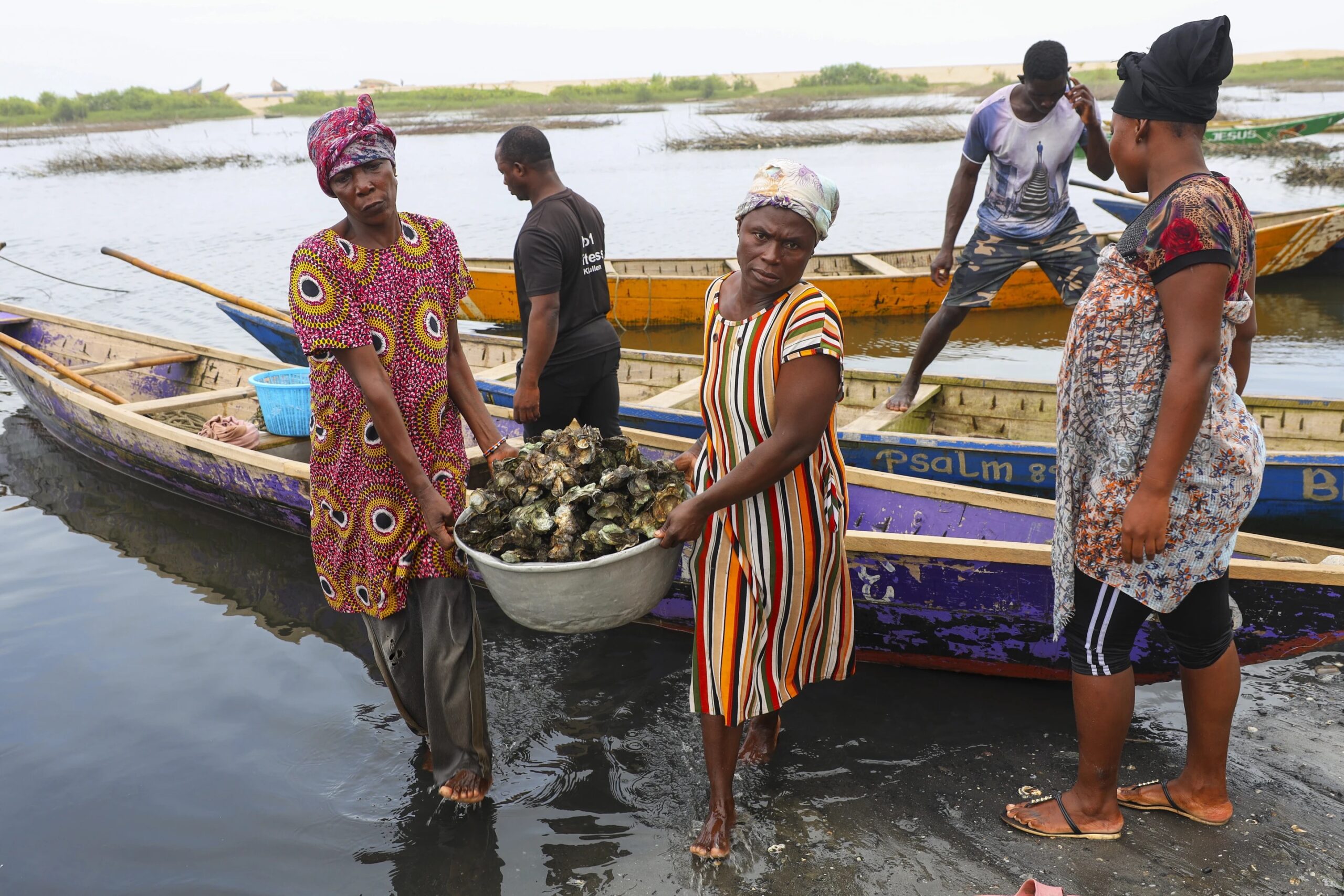North Carolina’s estuaries – the place where freshwater and saltwater meet – are home to things like shellfish, plants, fish and turtles. Researchers in Morehead City are studying the human impacts from climate change which is leading to warmer waters and declining populations of turtles.
At the loading deck of the UNC Institute of Marine Sciences, 17 undergraduate students gather for class. These students are part of a Field Site program where they spend the semester in Morehead City exploring the “living classroom” of the North Carolina coast.
Today’s lesson? A necropsy or dissection of a green sea turtle. It’s covered in barnacles and algae and sits on a blue plastic storage lid on a white folding table.
Matthew Godfrey, a sea turtle biologist with the North Carolina Wildlife Resource Commission, leads the necropsy. He said this turtle died from a cold stun. That occurs when water temperature drops below 50 degrees. Turtles become lethargic – unable to swim and float to the surface leading to health issues or death.
“That’s what happened to this guy,” Godfrey said. “It’s the case now for the past 10 years that we’ve recorded at least 100 cold-stunned turtles every year, sometimes 1000, sometimes 2000 turtles.”
Ken Lohmann, a professor of marine biology at UNC, said sea turtle conservationists believe cold stuns are not only becoming more frequent but also more severe.
“It’s difficult to say with certainty what the cause is but certainly a reasonable speculation would be that as the oceans warm, the turtles go a little bit further north than they normally would,” Lohmann said.
Lohmann said these turtles can be caught by surprise because they do not have the normal warning signs to migrate down south.
Godfrey said the increase in temperatures from climate change not only causes premature deaths in turtles, but prevents the population from growing.
“There’s concern about temperatures will become much warmer on nesting beaches,” said Godfrey, “there’ll be more females produced, fewer males and maybe the population will become overly female biased and not have enough males to fertilize eggs.”
The sex of a sea turtle is determined by the heat of the sand. The warmer it is, the more likely a female will be born from the egg. In North Carolina, Godfrey said females are favored 2:1 – and the one he is working on is also female.
Lohmann said discoveries from necropsies like Godfrey’s can help lead to changes. After turtles were discovered to be drowning from shrimping nets, turtle excluder devices became mandated in the late 1980s.
“By keeping an eye on animals that are stranding either dead or dying, we can become aware of threats in the environment and take action to try to remedy them,” Lohmann said.
Jillian Daly, a student who attended the necropsy workshop, said it was interesting to see the inside of the turtle after it was affected by a cold stun.
“It happens here in North Carolina all the time,” Daly said. “There’s nothing the turtles can do because they’re just in the wrong place at the wrong time.”
Godfrey will share the data on species, age, health status and potential threats discovered during the necropsy with the Federal Sea Turtle Stranding Office. Researchers’ work on necropsies can lead to more discoveries to combat declining turtle populations.
This story was originally posted with UNC Media Hub.
Lead Photo via Daniela Rodríguez-Puente / UNC Media Hub
Chapelboro.com does not charge subscription fees. You can support local journalism and our mission to serve the community. Contribute today – every single dollar matters.










